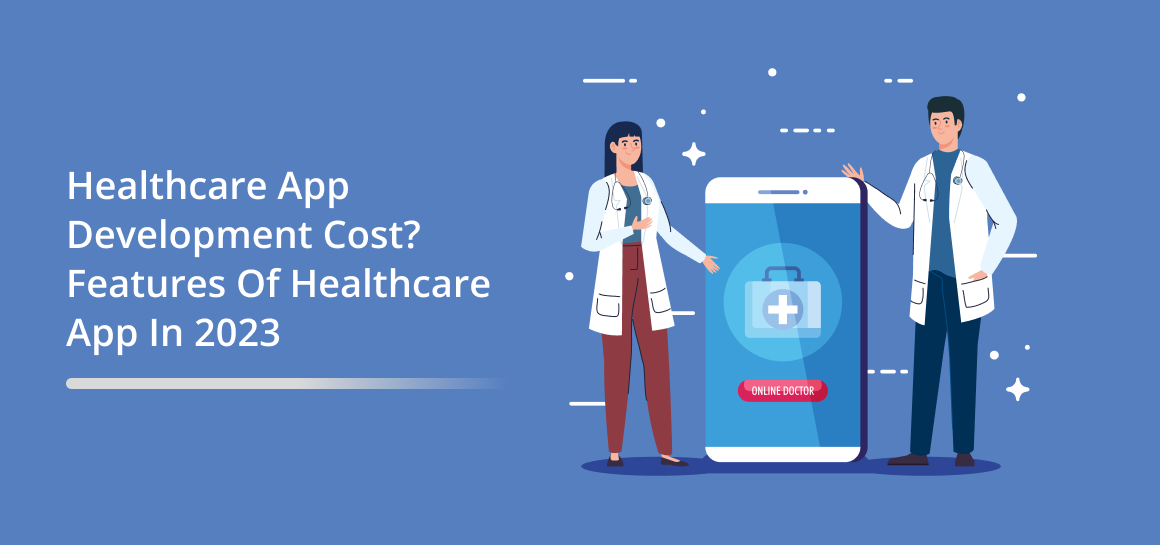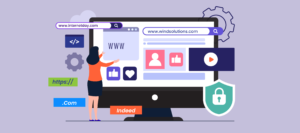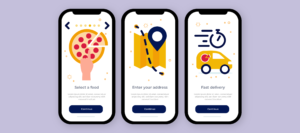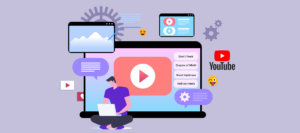How Much Does Healthcare App Development Cost? Best Features Of Healthcare App In 2023
Recently, the creation of mobile healthcare applications has exploded. More than 70% of patients concur that allowing their doctor access to their health information via a mobile app would be beneficial.
Healthcare app development is the process by which a mobile app development company develops a mobile application to assist users in effectively managing their health conditions, fitness objectives, hospital stays, or doctor’s appointments.
Users are given more access to the healthcare system when a company creates a healthcare app. With a simple swipe on their smartphone displays, patients can access various information and medical and healthcare facilities.
Therefore, creating healthcare apps benefits doctors, company owners, and patients who want easy access to healthcare.
Although the functionality of healthcare apps can change, their purpose never changes. The advantages of mobile health apps make life simpler for patients and medical professionals, and they help with hospital administration.
In this blog, you will discover the most crucial health mobile app features, healthcare app development cost, along with instructions before developing a healthcare app. Let’s dive in!
What is Healthcare App Development?
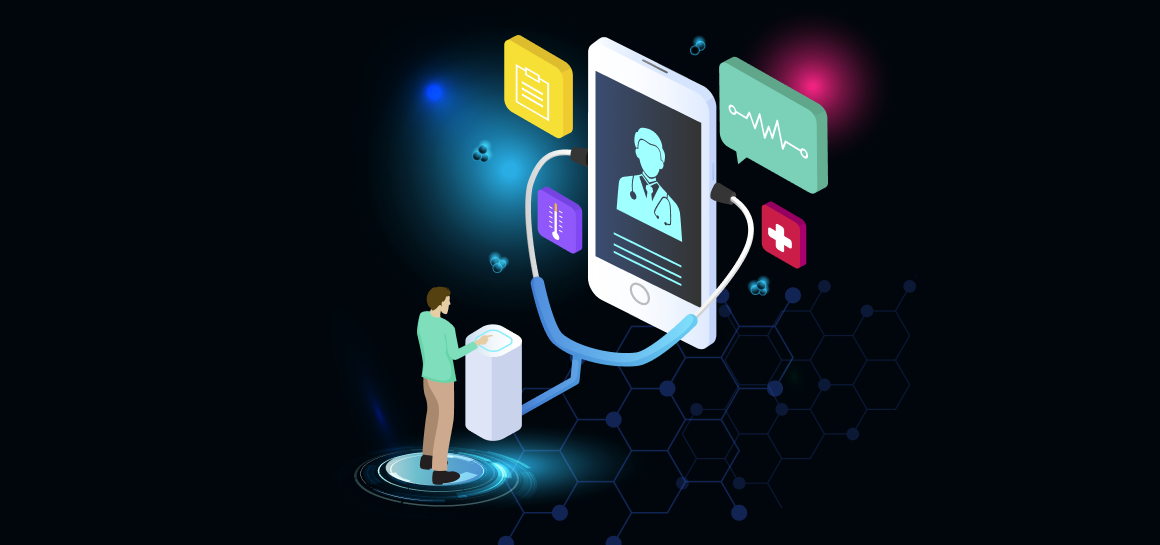
A healthcare app is a software application created for mobile platforms that enable users to send data and track their health and medical conditions. Users can preserve electronic health records and seek medical advice with the help of healthcare applications (EHRs). They aid in filing insurance claims as well.
In general, developing an on-demand healthcare app expressly for the benefit of users’ health and well-being falls under the heading “mobile healthcare applications.”
These apps help people approach their activities more successfully, whether they have a medical issue or want to get healthier. Additionally, patients and medical experts are involved in developing healthcare apps.
This means that medical apps can be used by doctors, nurses, hospital administrators, and others to increase the effectiveness of their processes. These programmes give users access to practice management, telemedicine, medical coding, and medical billing software, among other tools.
Steps for Healthcare App Development
There are a variety of mobile healthcare apps on the market. You must now bring more value to consumers’ lives to design a specific healthcare application.
Setting your mobile app’s journey in the right direction requires differentiating it from the competition. Conduct in-depth market and competitive research to find gaps and difficulties that your solution might address.
This entails speaking with doctors, nurses, hospital administration, patients, and other industry participants.
Developing healthcare applications involves several important phases, some of which are listed below.
| Step 1: | Select the type of app |
| Step 2: | Market Research |
| Step 3: | Engage a team to develop apps |
| Step 4: | Design an MVP |
| Step 5: | Testing of Healthcare apps |
| Step 6: | Launching |
| Step 7: | Constant Testing |
Step 1: Select the type of app:
The target audiences for today’s mobile healthcare applications are patients, healthcare providers, and administrators.
For doctors, there are
- Setting up patient appointments using calendars and reminders
- Health calculators
- Accessing a pharmacological database quickly
Such tools simplify, streamline, and increase transparency in the work of doctors.
For patients, there are
- A weight loss app
- Medical dictionary
- Symptom checker
- Exercise training
Step 2: Market Research
A mobile app’s development is a continuous process. In the early stages of your research, you should know more about the possible users of your app. Your company will have to gain insights into what users expect throughout this stage of healthcare app development.
You can inquire about this by doing one of the following:
- Am I familiar with the hangouts of my potential customers?
- Where are they located on the demographic spectrum?
- What preferences do my potential consumers have?
- Does their equipment differ in any way?
Identifying a target market’s audience is the first step in developing a product for that market. You risk losing potential users’ interest if your app does not have the proper product-market fit.
Step 3: Engage a team to develop apps
Here’s where you can make a difference. A team with expertise in healthcare mobile app development is required to ensure an app’s success.
Now that you know your target audience and the problem your app is meant to solve, put your concept into action. Developing a healthcare app is not a project that every team can handle. As a result, your project needs a team of skilled engineers, designers, and QA testers.
Therefore, hiring a freelancer to design your healthcare application is not suitable. Instead, hire app developers who can contribute their knowledge, experience, and expertise to produce a successful application.
Step 4: Design an MVP
It might be expensive to create a medical app. As a result, you must have a minimum viable product (MVP) that aids in choosing the appropriate course. Starting your mHealth project by developing an MVP is always a good idea because the first working version of your app can help you fix errors.
Depending on the size and complexity of the project, the cost of MVP app development can help you save money and reduce the time to market by half. Before uploading an app to the app store, test your items among the intended audience and make any necessary functional adjustments.
Step 5: Testing of Healthcare apps
Once the team is in place, the healthcare app may be created quickly. Additionally, testing your app before publishing is always a good idea. Application testing is a crucial stage when you may examine how the chosen technology stack functions and have instant access to all the data you require.
You can also create your app all at once and have it tested at your end once it has reached its final form. This is important because when you employ a specialised team to design a healthcare app, they will work to make your health app idea a reality by, among other things, dealing with the app’s architecture and client communication.
Step 6: Launching
The next stage is to make the healthcare application available to the intended users when it has been constructed. It may be started on the iOS App Store and the Play Store for Android. Here, you can consider potential updates, new features, etc.
Step 7: Constant Testing
Remember that there is a potential for faults and errors when your mHealth application is released as soon as possible. Additionally, you can get input from users, physicians, patients, etc., where you need to make adjustments.
Therefore, you must repair any current problems and improve your programme to avoid alienating your users. The next stage is to make the healthcare application available to the intended users when it has been constructed. It may be started on the iOS App Store and the Play Store for Android. Here, you can consider potential updates, new features, etc.
Things to Consider Before Healthcare App Development
| Step 1: | What Is the Objective of Your Healthcare Application? |
| Step 2: | Selecting Your Tech Stack for a Mobile Healthcare App |
| Step 3: | Understanding Your User’s Needs |
| Step 4: | Define Your Healthcare App’s Type and Features |
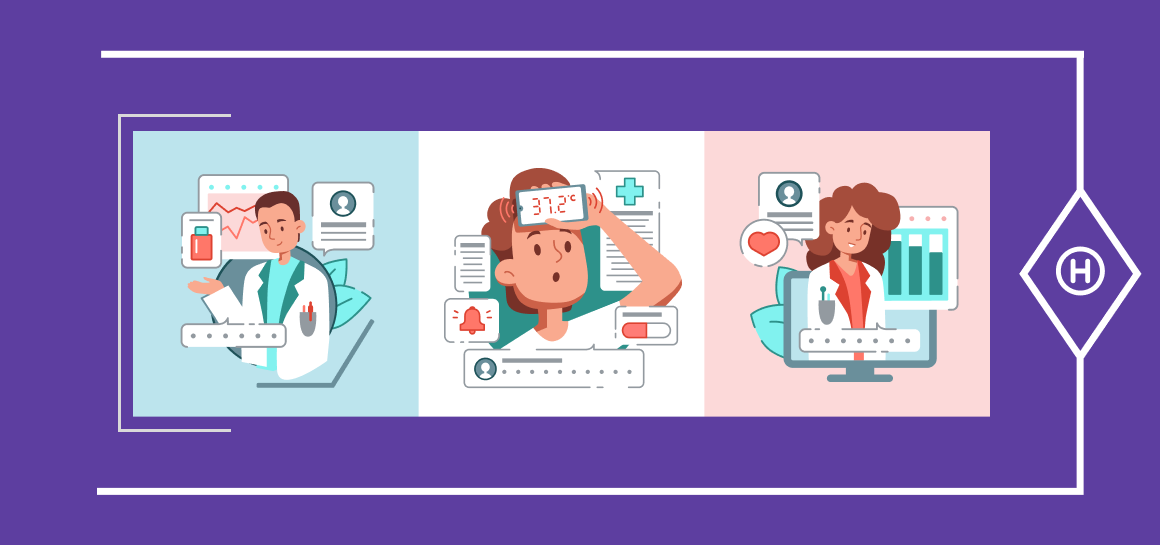
Step 1: What Is the Objective of Your Healthcare Application?
The features of medical apps differ significantly from one app to another. It would help if you considered the goal of your tech solution before determining which hospital app features to add to your healthcare app development.
Step 2: Selecting Your Tech Stack for a Mobile Healthcare App
What tech stack is required to ensure you can build the required functionalities for your healthcare app? The technology used to make medical apps is evolving quickly. A health app feature you saw on every app might not be relevant now.
While choosing your tech stack, it’s crucial to remember that you’ll need to update your app frequently. To continue enhancing the user experience for patients and doctors, you must stay abreast of emerging technologies and be familiar with their newest features.
Step 3: Understanding Your User’s Needs
This phase in selecting the features for your mHealth app includes determining your users’ needs. Striking new features occasionally makes you lose sight of whether your users will benefit.
Doctors and patients are your two main target markets. Only doctors must be considered if you’re developing an internal clinic app. Don’t forget to consider the features that patients and medical professionals will be seeking in your app. Then, make these functions as simple and natural-seeming as you can.
Step 4: Define Your Healthcare App’s Type and Features
Applications in distinct healthcare specialized niches will unavoidably have various features and characteristics. For instance, a nutrition app won’t have the same capabilities as a women’s health tracking app. The features you include in your app will be significantly influenced by your target audience.
Best Features Of Healthcare App development
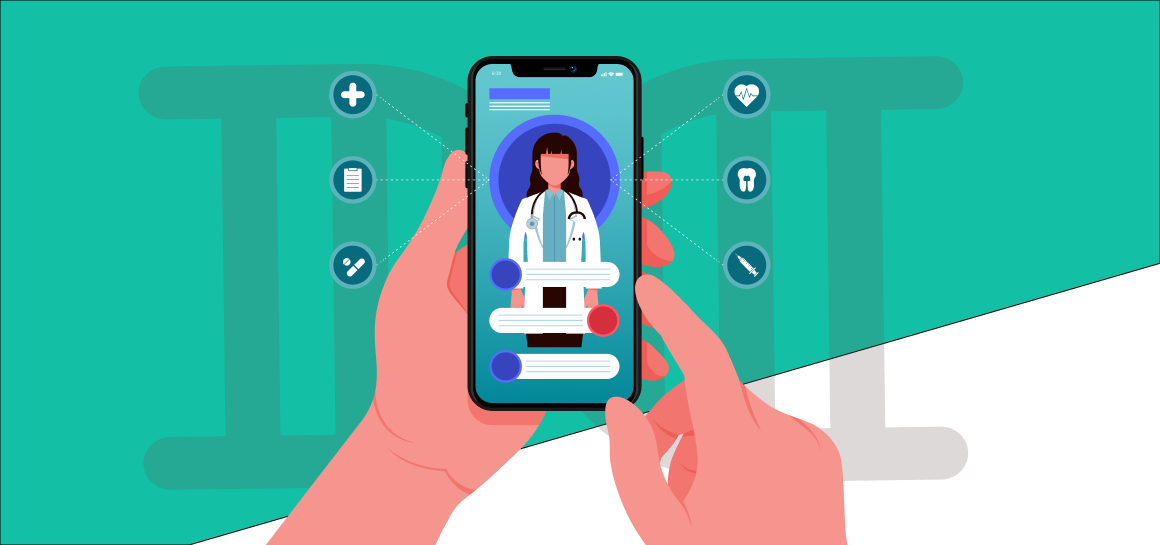
Some aspects make healthcare applications useful for users despite the variety of healthcare applications serving various objectives. Let’s take a closer look at what they are.
1. Convenient signup and login:
Users may quickly input their information using the login option, which decreases appointment wait times. To provide the best user experience, your app’s login component has to be streamlined. Users should be able to enter any information during registration and login to build and access their profiles.
2. Search for a doctor’s profile:
The mobile healthcare app you develop should allow users to select the doctor they want to see. The doctor profile lookup capability is essential if your app allows users to register in person or schedule online appointments.
Patients will thus review the doctor’s credentials. Additionally, customers can choose a professional based on user reviews. Geolocation will make it easier for patients to select a nearby doctor based on location.
3. Notifications and reminders
Push notifications and in-app reminders are crucial features that you must have in your app. Although they are helpful, they shouldn’t be invasive. Reminders and notifications enhance the user experience when used correctly. For instance, they alert consumers to upcoming appointments.
You can also set up reminders to assist patients in taking their medications on time. Such delicacy will improve the medical process.
4. Scheduling appointments:
One of the essential functions of your healthcare app is appointment scheduling. It speeds up the appointment scheduling process by enabling patients and clinicians to choose, modify, or cancel a scheduled appointment.
The app should provide available appointment times so that users can select the most convenient one. A patient receives confirmation of the appointment once a doctor or admin approves it.
5. In-app chats and chatbots:
Artificial intelligence chatbots will provide patients with first-level medical care. Chatbots will determine the following steps for a patient with AI and machine learning based on their symptoms.
Furthermore, a chatbot might offer to schedule a doctor’s appointment. With a file-sharing function, discussions can be improved. Patients can send clinical test reports and findings to medical professionals. This will make the diagnosis procedure easier.
6. Search for prescriptions and pharmacies:
Doctors can generate and distribute prescriptions to patients using the prescription feature through the app. They display the required medication and dosage.
An option to look up pharmacies can also be added. It can assist patients in researching a pharmacy’s stock of medications. Additionally, patients can view details about probable side effects and drug interactions.
7. Patient community:
The feature increases patients’ participation in the healing process, including discussion. Users can exchange knowledge on general topics using the community function. Dealing with chronic conditions or other ongoing issues is one example of this. The characteristic thus enhances the effectiveness of the treatment.
8. Inclusion of medical device integration:
The future of healthcare apps is data-driven. Medical device data gives doctors more control when deciding on a course of therapy.
With a dashboard function, medical equipment and app integration are beneficial. Doctors and experts can view health outcomes with its assistance. Patients better understand their health status when they can see the data on the medical gadget. They get more invested in the healing process as a result.
9. Care and medication reminder:
Putting up a care plan based on the required services should be possible. The app should provide a payment integration for consultation fees.
This function helps remind users of their appointments, making it ideal for mobile healthcare apps. If and when necessary, regular prescription medication or pill reminders can also be included.
10. One-Click Emergency:
This function is crucial for urgent problems that develop in unexpected circumstances. An instant ambulance call can be beneficial in this situation. You can use this function to ask for emergency assistance for yourself, friends, or family.
This function notifies the hospital, the precise location and any reliable contacts. Additionally, you can locate nearby pharmacies and laboratories to get assistance in an emergency.
How much does Healthcare App Development Cost?
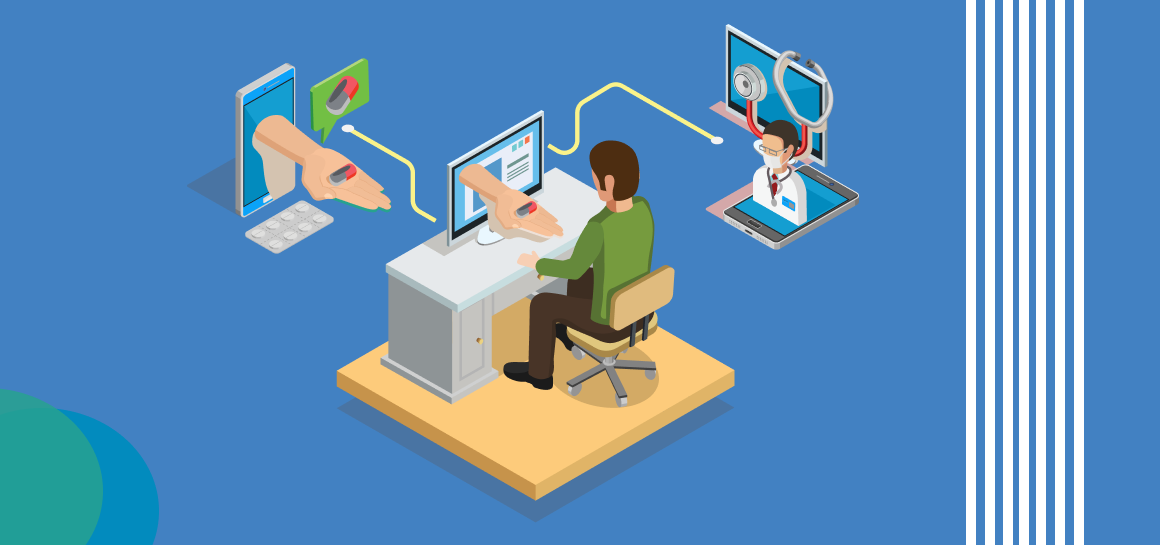
The healthcare app development cost depends on a variety of things, but you should plan on spending between $40,000 and $50,000.
Your app development project will incur various costs as you integrate IoT, AI, and real-time capabilities, raising costs by anywhere between $100,000 and $150,000.
An application’s development faces specific challenges depending on the industry. Making a mobile healthcare application involves pre-development, development, and post-development phases.
As a result, to accurately estimate the entire healthcare app development cost, you must estimate the cost of each stage of the app development process.
You can take into account the following significant charges for the pre-build stage:
App Design: This relates to the price of creating your healthcare application, which requires the most incredible time and money and comprises wireframes, UI, and prototypes.
User Research & Testing: The outcomes of user research have a significant impact on how the app is made. Without in-depth research, you won’t know what your customers want or how the app will solve their problems. You’ll have to spend more money on market research and audience analysis during this phase.
Compliance & Regulations: HIPAA rules must be followed when developing mHealth apps. If you skip this step, legal action and penalties might cost you $100 to $50,000.
Remember that in addition to the platform you select (Android, iOS, Cross-Web (Flutter)), the healthcare app development cost also depends on your organization’s location.
The hourly rate for an app development company in the US is from $150 to $250, but the pricing in Europe is between $85 and $150.
What Are Some Successful Healthcare App Examples?
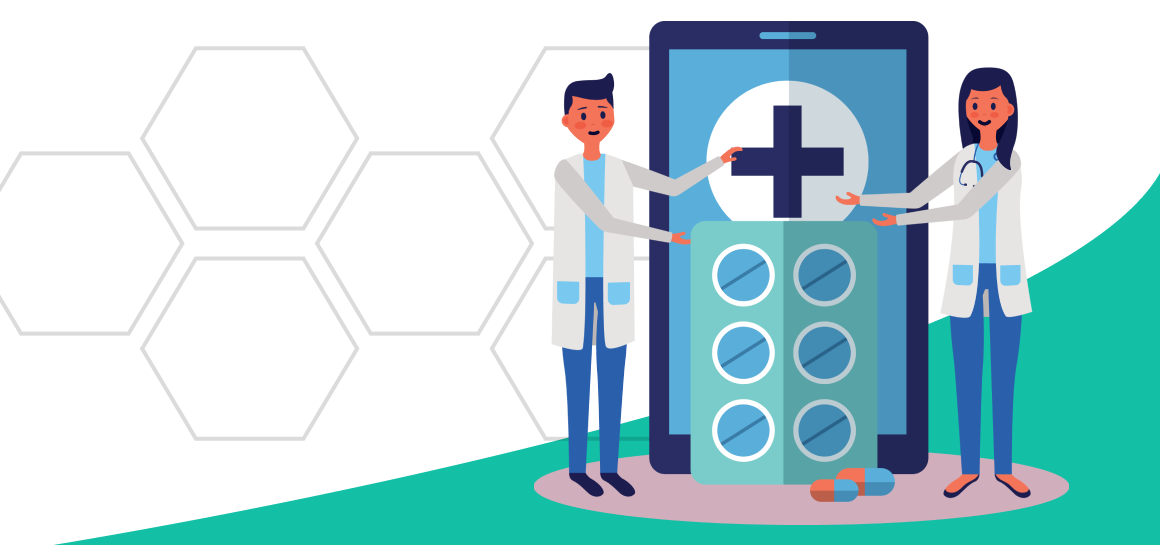
It would help to look at a few notable examples of healthcare app development. Among the tens of thousands of healthcare applications currently on the market that could help users better manage their health, these are some of the most well-liked ones.
With the ability to schedule appointments, remind users to take their medications, and access personal health data, these applications give users more control over their health.
1. Medisafe:
A mobile app called Medisafe prompts users to take their medications on schedule. You might think of this as a “virtual pillbox” where timing is crucial.
Additionally, it makes selecting the proper medication easier by offering well-thought-out recommendations based on the prescription data. By doing this, the proper amount of time is maintained between the two dosages.
2. Dminder:
Due to the epidemic, many people are concentrating on improving their health, immune systems, and sleep patterns. Getting vitamin D is typically the key to this.
Dminder is a focused, robust app that helps users get the appropriate amount of sleep. The application also alerts users to head outside based on location when it’s time to catch some sun.
3. Epocrates:
For patients who want to learn more about using pharmaceuticals and medications, Epocrates is a reliable, thorough, and simple-to-use resource. This involves knowledge about various medications, their applications, dosages, side effects, safety measures, interactions, and more.
Patients can utilize this application with information from one category (drug or prescription) to be enlarged with a finger touch or browse the associated keywords for other pharmaceuticals.
4. Amwell:
This telehealth application has the potential to close the gap between the supply and demand for healthcare.
Amwell, which American Well runs, is one of the most well-known telehealth programmes in the United States. When a patient uses the app to schedule a virtual urgent care visit, a video call may be quickly established with a real doctor.
Final Words
The healthcare industry is moving similarly to other industries in utilizing the digital transition. Mobile app development teams will need to put themselves in the position of doctors and patients to solve their difficulties and provide high-quality healthcare services.
It’s time to decide now that you know everything involved in developing healthcare applications. With an eye toward future expansion, now is the ideal time to launch a new company. If you’re seeking such a group, come to Pairroxz Technologies to put an end to your search. You may rely on our experience building user-friendly, simple mobile healthcare applications.
FAQs
Question 1: What are Health Apps?
These are mobile programmes that provide medical and health-related services. Health applications can connect patients to doctors or clinics and offer consumers helpful information.
Question 2: How do you Create a Medical App?
The business issues that the application must address should be identified. For a medical application, conduct research on your target demographic. Establish the required features, then design a user-friendly application interface. Build and test your application with the assistance of a skilled development team.
A mobile healthcare application typic
Question 3: What is the Healthcare App Development Cost?
ally costs $50,000 to design. The Healthcare App Development Cost depends on the app’s features, the company’s expertise, the project’s location, and other elements.

